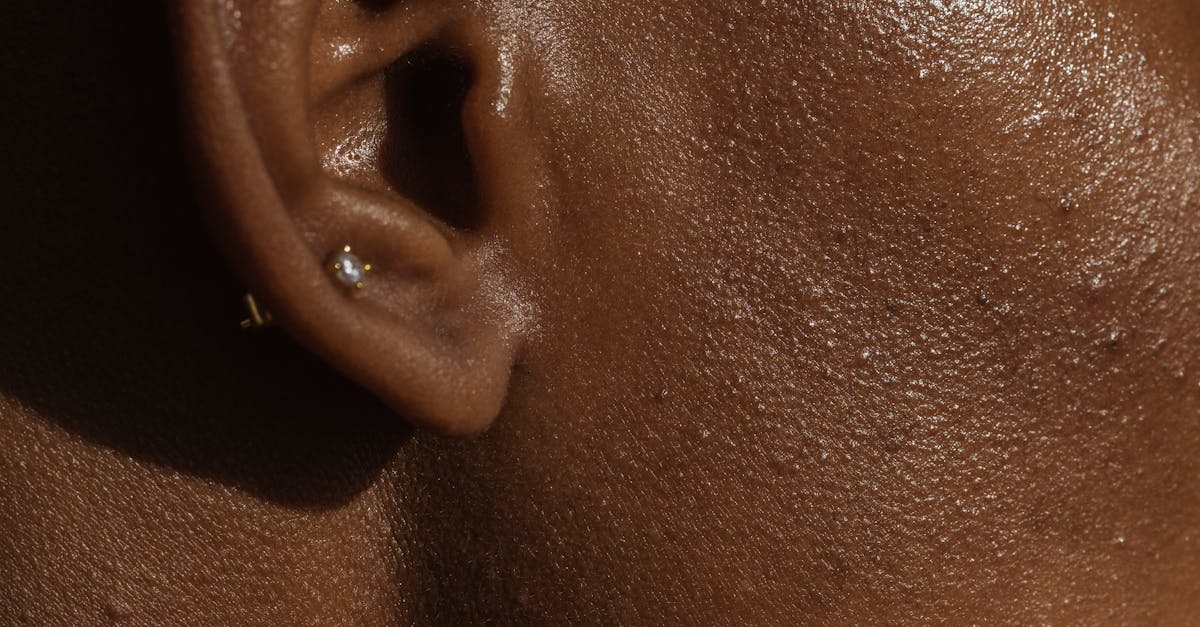
At nycosmeticsurgery.net, we specialize in providing top-notch ear surgery services to help individuals achieve their desired aesthetic goals. Our team of experienced and board-certified cosmetic surgeons are dedicated to delivering safe and effective procedures that are customized to each patient's unique needs. Whether you are looking to correct misshapen or protruding ears, address earlobe issues, or undergo ear reconstruction surgery, our experts are here to guide you through the process with care and precision. With cutting-edge techniques and a commitment to patient satisfaction, nycosmeticsurgery.net is the premier destination for ear surgery in New York City. Trust us to help you feel more confident in your appearance and enhance your overall quality of life.
Risks and Complications
Ear surgery, whether for cosmetic or medical reasons, carries certain risks and potential complications. Complications may include infection, bleeding, adverse reaction to anesthesia, or poor wound healing. It is essential for patients to understand these risks and discuss them thoroughly with their surgeon before proceeding with any ear surgery procedure. In some cases, risks may be higher for patients with certain medical conditions or those who smoke or have a history of poor healing.
Additionally, specific to ear surgery, there are unique risks associated with different types of procedures. For example, otoplasty or ear pinning surgeries for protruding ears may involve risks such as asymmetry, overcorrection, undercorrection, or changes in skin sensation around the ear. Procedures involving the eardrum, inner ear, or ear canal may carry risks related to hearing loss, balance issues, or damage to delicate structures. It is crucial for patients to have a thorough understanding of the potential complications associated with their specific ear surgery procedure and to follow post-operative care instructions diligently to minimize these risks.
Understanding Potential Issues Associated with Ear Surgery
Potential issues associated with ear surgery can vary depending on the specific procedure and individual factors. One of the common risks of ear surgery is bleeding, which can occur during or after the surgical intervention. Physicians may take precautions to minimize this risk, but it is important for patients to be aware of this potential complication. In some cases, insurance coverage for ear surgery may be a consideration, so it is advisable to consult with the insurance provider beforehand to understand the extent of coverage.
Another issue that may arise with ear surgery is the possibility of developing a fistula. This abnormal connection between structures that are not normally connected can lead to complications and may require further surgical intervention to correct. Patients undergoing ear surgery should be informed about the potential risks associated with fistula formation and be prepared for post-operative care to address this issue if it arises.
Pediatric Ear Surgery
Pediatric ear surgery is a specialized field within the realm of cosmetic surgery that addresses various ear-related conditions in children. One common concern that may lead to surgical intervention is a condition called aural atresia, where the ear canal is either partly or fully closed off. This can result in hearing difficulties and other developmental issues. Surgical techniques for correcting aural atresia may involve creating or widening the ear canal to improve auditory function and overall ear health.
Another notable procedure in pediatric ear surgery is the correction of protruding ears, often referred to as "cauliflower ear." This condition can impact a child's self-esteem and may be a target for teasing or bullying. Surgical correction can involve reshaping the ear cartilage and repositioning the ears closer to the head for a more natural appearance. By addressing such concerns early on, pediatric ear surgery can not only improve a child's physical well-being but also positively impact their emotional and social development.
Ear Procedures for Children
Ear procedures for children are often necessary to address a variety of ear-related issues that can impact their hearing and overall health. Common procedures include tympanostomy, which involves inserting small tubes into the eardrums to facilitate drainage and prevent fluid buildup. This procedure is commonly performed for children with recurring ear infections or fluid in the middle ear that does not clear on its own. Another common procedure is myringotomy, which involves making a small incision in the eardrum to relieve pressure and drain fluids, often combined with the placement of ear tubes to aid in ventilation.
Pediatric ear surgeries can also involve more complex procedures, such as ossicular chain reconstruction to improve hearing in children with issues affecting the tiny bones in the middle ear. In cases of aural atresia, where the ear canal is underdeveloped or absent, reconstructive surgery may be necessary to restore hearing. Additionally, children with congenital conditions like anotia, where the external ear is missing, may undergo procedures involving tissue expanders or ear reconstruction to improve the appearance and function of the ear. These procedures require a skilled surgical team, including ear surgeons, neurosurgeons, and ENT specialists, to ensure the best possible outcomes for children's ear health and overall well-being.
Advanced Surgical Techniques
Advanced surgical techniques in ear surgery have seen significant advancements in recent years. Surgeons now have the ability to perform minimally invasive procedures using local anesthetics, reducing the risks associated with general anesthesia. These techniques have proven to be effective in treating a variety of conditions, from middle ear infections to more complex issues like brain abscess and vascular abnormalities.
One of the most notable advancements in advanced surgical techniques is the use of cochlear implants for patients with profound hearing loss. These implants provide a way to bypass damaged parts of the ear and directly stimulate the auditory nerve, significantly improving the quality of life for individuals who were previously unable to benefit from traditional hearing aids. Moreover, innovations in auditory brainstem implants have opened up new possibilities for those with specific types of hearing disorders that were previously untreatable through conventional means.
Innovations in Ear Surgery for Enhanced Results
Innovations in ear surgery have significantly enhanced outcomes for patients seeking aesthetic or functional improvements. Advances in surgical techniques, such as the use of endoscopic approaches, have allowed for more precise and minimally invasive procedures. For instance, endoscopic ear surgery enables surgeons to access the ear canal without making external incisions, reducing scarring and recovery time. This innovation has been particularly beneficial for patients requiring treatment for otitis media or abscesses in the ear.
Furthermore, the development of medical implants and prosthetics has revolutionized reconstructive ear surgery. Surgeons can now utilize state-of-the-art materials to recreate the intricate structures of the ear, such as the stapes or incus, with greater accuracy and durability. These advancements have significantly improved the quality of life for individuals with congenital problems, traumatic injuries, or defects in the ear. By incorporating these innovative techniques and materials, otologists and plastic and reconstructive surgeons can achieve more natural-looking and long-lasting results for their patients.
FAQS
What are the common risks and complications associated with ear surgery?
Common risks and complications of ear surgery include infection, bleeding, scarring, hearing loss, and changes in ear shape or size.
How can patients better understand potential issues associated with ear surgery?
Patients can better understand potential issues associated with ear surgery by thoroughly discussing them with their surgeon during the consultation and following pre and post-operative care instructions closely.
What should parents know about pediatric ear surgery for their children?
Parents should know that pediatric ear surgery is often necessary to address issues such as recurrent ear infections, hearing loss, or structural abnormalities, and that it is typically safe and effective when performed by a skilled surgeon.
What are some advanced surgical techniques used in ear surgery?
Advanced surgical techniques in ear surgery may include minimally invasive procedures, laser technology, and the use of specialized implants or grafts to restore or improve ear function and aesthetics.
How have innovations in ear surgery enhanced results for patients?
Innovations in ear surgery, such as robotic-assisted procedures, 3D imaging technology, and customized implants, have enhanced surgical precision, outcomes, and patient satisfaction in terms of both functional and aesthetic improvements.


